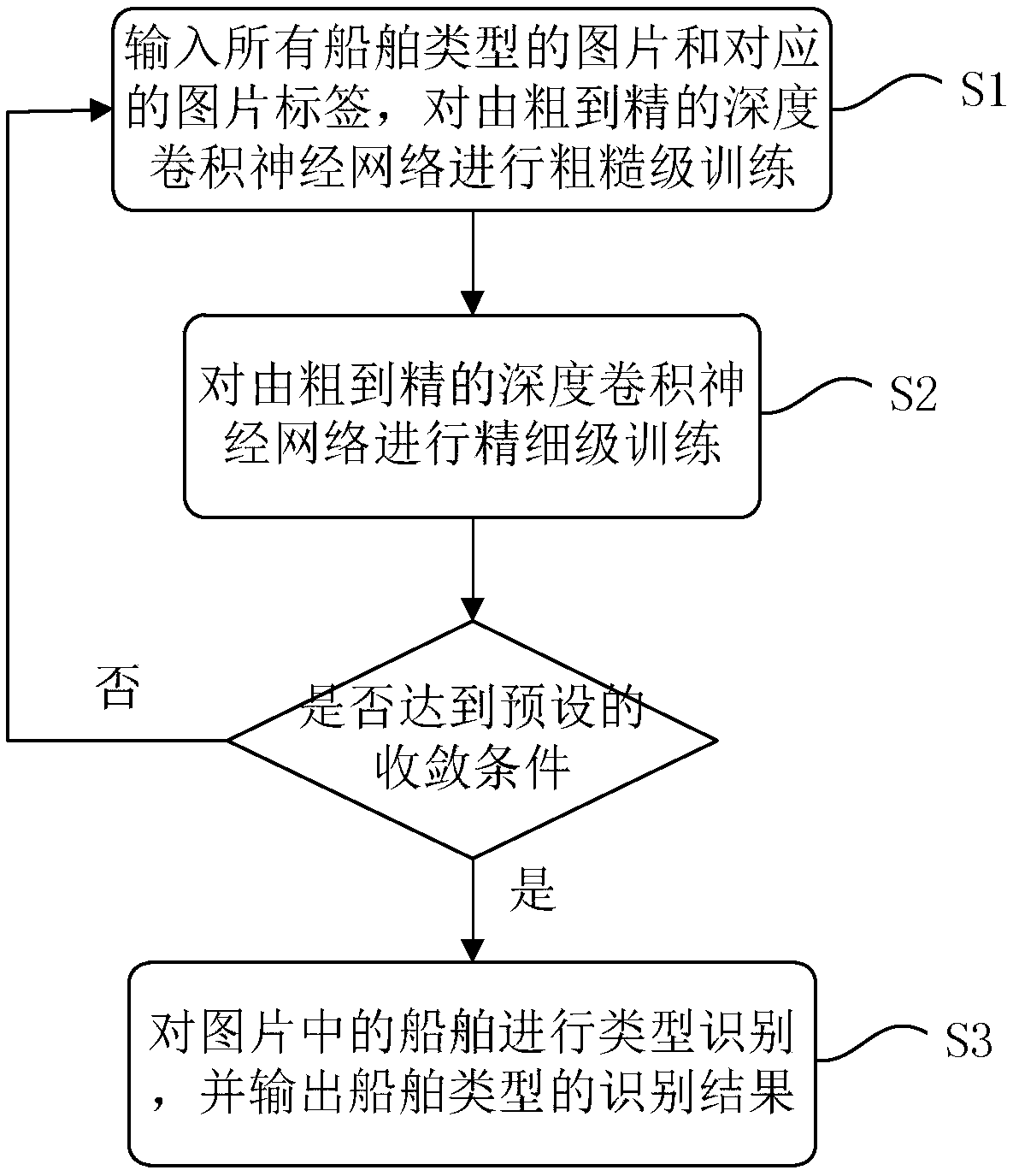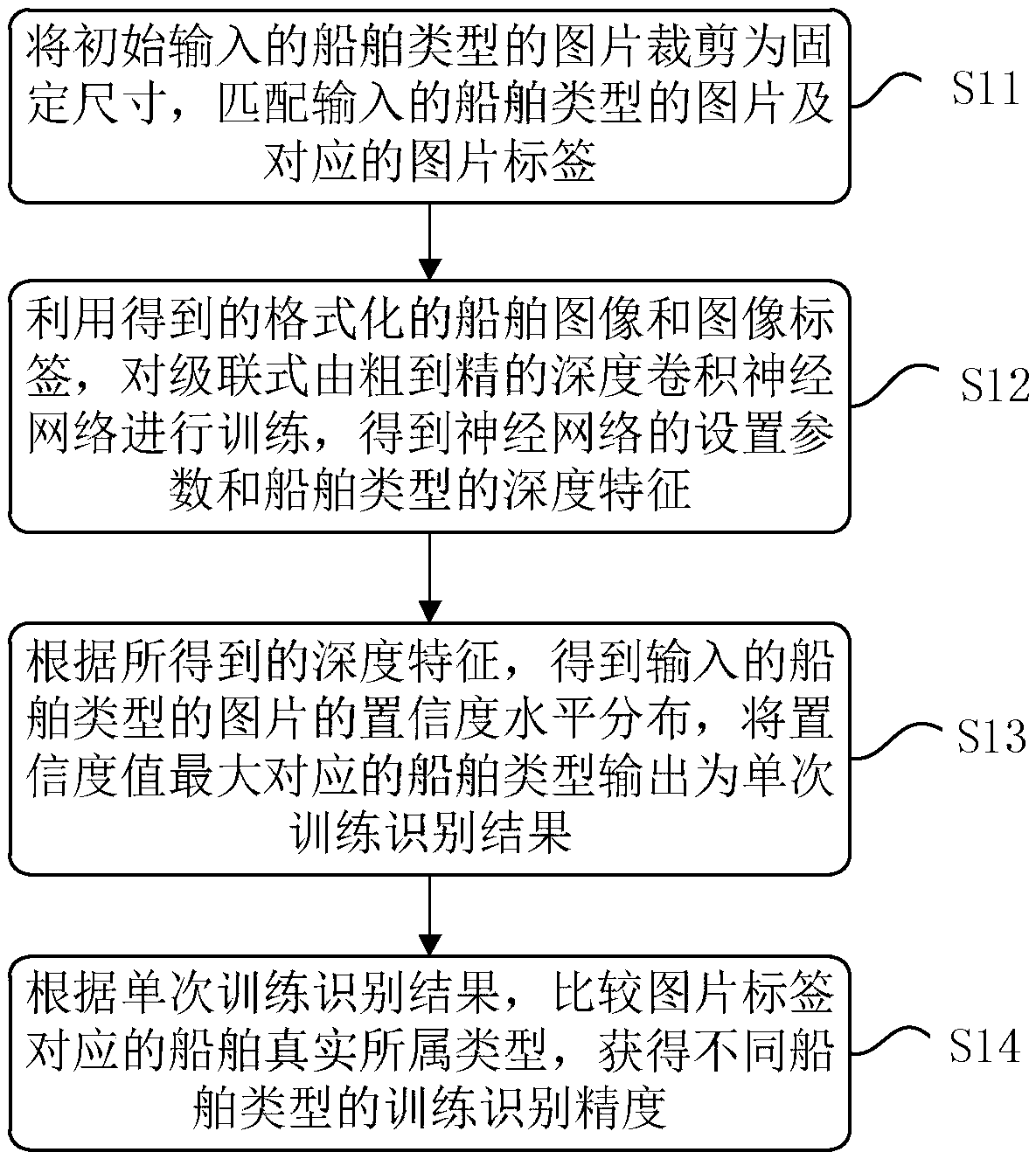A cascaded coarse-to-fine convolutional neural network method for ship type identification
A neural network and type recognition technology, applied in character and pattern recognition, instruments, computer parts, etc., can solve the problems of time-consuming acquisition of ship type information, adverse maritime supervision efficiency, etc., to ensure maritime traffic safety, realize automation and safety. High-precision identification and the effect of improving navigation efficiency
- Summary
- Abstract
- Description
- Claims
- Application Information
AI Technical Summary
Problems solved by technology
Method used
Image
Examples
Embodiment Construction
[0055] In order to better understand the technical features, objectives and effects of the present invention, the present invention will be described in more detail below with reference to the accompanying drawings. It should be understood that the specific embodiments described here are only used to explain the present invention and not used to limit the patent of the present invention. It should be noted that these drawings all adopt a very simplified form and all use imprecise ratios, which are only used to facilitate and clearly assist in explaining the patent of the present invention.
[0056] This embodiment provides a cascaded deep convolutional neural network ship type identification method from coarse to fine, refer to the attachment figure 1 As shown in the schematic diagram of the overall process, the method includes the following steps:
[0057] S1: Input the pictures of all ship types and the corresponding picture labels, and perform coarse-level training on the deep ...
PUM
 Login to View More
Login to View More Abstract
Description
Claims
Application Information
 Login to View More
Login to View More - R&D
- Intellectual Property
- Life Sciences
- Materials
- Tech Scout
- Unparalleled Data Quality
- Higher Quality Content
- 60% Fewer Hallucinations
Browse by: Latest US Patents, China's latest patents, Technical Efficacy Thesaurus, Application Domain, Technology Topic, Popular Technical Reports.
© 2025 PatSnap. All rights reserved.Legal|Privacy policy|Modern Slavery Act Transparency Statement|Sitemap|About US| Contact US: help@patsnap.com



